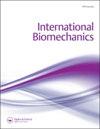尺侧副韧带在体外和体内棒球投球研究中的负荷悖论(叙述性回顾)。
Q2 Medicine
引用次数: 3
摘要
尺侧副韧带(UCL)变弱或撕裂发生在16%的职业棒球投手。为了防止球员遭受UCL损伤,重要的是要了解UCL特性和肘部稳定器之间的关系,以及在投球时UCL上的负荷。体外研究表明,34 Nm的极限外翻扭矩会导致UCL破裂,这与报道的俯仰峰值外翻扭矩(40-120 Nm)明显矛盾。假设这两种观察结果都是正确的,那么问题来了,为什么100名职业投手中“只有”16人会出现UCL破裂。在体内研究中低估其他结构的影响最有可能解释这种不匹配,因为计算的体内扭矩也包括功能和结构稳定剂的可能贡献。体外研究表明,屈-旋前肌群有可能直接抵消外翻扭矩,而肘关节屈-伸肌与肱骨关节联合可能通过增加关节压缩力间接影响外翻扭矩。需要准确的实验肌电图数据和更详细的肘关节(肌肉骨骼)力学模型来研究结构和功能稳定剂是否以及在多大程度上可以在俯仰时保护UCL。本文章由计算机程序翻译,如有差异,请以英文原文为准。



The ulnar collateral ligament loading paradox between in-vitro and in-vivo studies on baseball pitching (narrative review).
ABSTRACT Ulnar collateral ligament (UCL) weakening or tears occur in 16% of professional baseball pitchers. To prevent players from sustaining a UCL injury, it is important to understand the relationship between the UCL properties and elbow stabilizers with the load on the UCL during pitching. In-vitro studies showed that the ultimate external valgus torque of 34 Nm would rupture the UCL, which is in apparent conflict with the reported peak valgus torques in pitching (40–120 Nm). Assuming both observations are correct, the question rises why ‘only’ 16 out of 100 professional pitchers sustain a UCL rupture. Underestimation of the effect of other structures in in-vivo studies is most likely the explanation of this mismatch because the calculated in-vivo torque also includes possible contributions of functional and structural stabilizers. In-vitro studies show that the flexor-pronator mass has the potential to counteract valgus torque directly, whereas the elbow flexor-extensor muscles combined with the humeroradial joint might have an indirect effect on valgus torque by increasing the joint compression force. Accurate experimental electromyography data and a more detailed (musculoskeletal)mechanical model of the elbow are needed to investigate if and to what extent the structural and functional stabilizers can shield the UCL during pitching.
求助全文
通过发布文献求助,成功后即可免费获取论文全文。
去求助
来源期刊

International Biomechanics
Medicine-Rehabilitation
CiteScore
1.90
自引率
0.00%
发文量
2
审稿时长
17 weeks
期刊介绍:
International Biomechanics is a fully Open Access biomechanics journal that aims to foster innovation, debate and collaboration across the full spectrum of biomechanics. We publish original articles, reviews, and short communications in all areas of biomechanics and welcome papers that explore: Bio-fluid mechanics, Continuum Biomechanics, Biotribology, Cellular Biomechanics, Mechanobiology, Mechano-transduction, Tissue Mechanics, Comparative Biomechanics and Functional Anatomy, Allometry, Animal locomotion in biomechanics, Gait analysis in biomechanics, Musculoskeletal and Orthopaedic Biomechanics, Cardiovascular Biomechanics, Plant Biomechanics, Injury Biomechanics, Impact Biomechanics, Sport and Exercise Biomechanics, Kinesiology, Rehabilitation in biomechanics, Quantitative Ergonomics, Human Factors engineering, Occupational Biomechanics, Developmental Biomechanics.
 求助内容:
求助内容: 应助结果提醒方式:
应助结果提醒方式:


